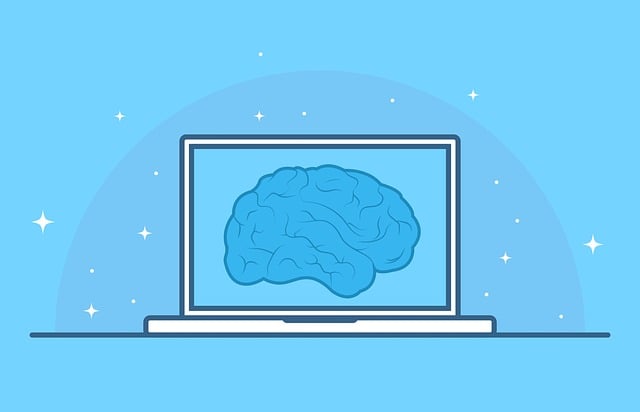Learn about the latest training trends and practices here.
Today’s workforce is competitive, goal-oriented and self-motivated. In order to attract and keep top talent, you need to provide them with the resources and support they need to succeed. When employees have ample opportunity to learn and advance their careers, they are less likely to want to leave. Leveraging the latest research insights, you can continue to stay on top of the growing needs of your employees and develop a corporate training and development strategy that helps everyone succeed. In this article, we’ll cover some of these top trends in training and development. We will refer you to Thinkific’s elearning trends report if you’d like to zero in on elearning. We will go beyond digital in this article. We will also emphasize AI.
You can learn more about putting these trends into action in our innovative facilitator train-the-trainer program.
Personalized training paths
Not all employees will have come from the same backgrounds or learning environments as others. They also likely have different ways of learning and respond to different types of incentives. Long gone are the days of a one-size-fits all approach to training. Instead, the best organizations employ personalized training programs that can be tailored to each employee’s specific learning needs and skills gap. While this approach is certainly more complex, it will likely yield better results for both you and your employees.
Mentoring
Going hand-in-hand with personalized learning, mentoring can also be useful in the workplace. By pairing experienced employees with newer team members through formal or informal programs, you can help reduce turnover, enhance recruitment, and resolve opportunity gaps, particularly for women and people of color.
Experiential learning
This approach to training is simply learning by doing. Employees are presented with real-world situations that actually apply to their job – and do their best to solve those hypothetical yet real-world scenarios. This type of training allows for critical analysis as well as quick thinking. It also may be a better option for employees who struggle with traditional book-and-exam style teaching.
Continuous development
Instead of one-off training sessions that take place once a year (or even fewer), there has also been a push for the idea of continuous development, in which employees are continuously investing in their education in order to become more well-rounded at their job. With technology and other advancements happening so rapidly, the need to keep up with their skills is also essential.
Power skills
Behavioral skills – otherwise known as power skills or soft skills – will also be a priority for companies to address in 2022 and beyond. According to a recent IBM report, behavioral skills dominated the list of core competencies that global executives are looking for from their employees – bypassing technical skills for the first time.
Mobile learning
As smartphone usage continues to overtake desktop users, it may be wise to consider how to move employee training and development to this mobile-first space. Using or creating a mobile app for training will allow employees to access the material whenever they want on their phone. It can also lend itself to more engaging and interactive learning experiences.

AI in Training and Development
Artificial Intelligence (AI) is rapidly transforming the landscape of training and development, offering innovative ways to enhance learning experiences and streamline training processes. Here’s how AI is shaping the future of corporate training:
- Personalized Learning Experiences: AI enables the creation of highly personalized training programs that adapt to individual learning styles and preferences. By analyzing data such as previous learning interactions and performance metrics, AI can tailor content to meet each employee’s unique needs, ensuring more effective and engaging learning experiences.
- Predictive Analytics and Recommendations: AI systems can predict future learning needs and recommend relevant training modules. This proactive approach helps in identifying skill gaps and addressing them timely, thereby keeping the workforce skilled and up-to-date.
- Intelligent Performance Assessment: AI-driven tools can provide more nuanced assessments of employee performance by analyzing various aspects of their learning process, such as engagement levels, problem-solving strategies, and knowledge retention. This leads to more accurate and insightful feedback, aiding in continuous improvement.
- Automated Content Creation and Curation: AI can assist in generating and curating training content, reducing the time and effort required to keep training material current. It can also adapt existing content to different formats, making it more accessible and diverse.
- Virtual Mentors and Chatbots: AI-powered virtual mentors and chatbots can offer on-demand support and guidance to learners, answering queries, providing explanations, and assisting with learning navigation. This ensures continuous and uninterrupted learning, even outside formal training sessions.
Other Trends for 2024
- Gamification: The integration of game design elements into training programs is expected to rise, making learning more interactive and fun. Gamification techniques like leaderboards, point systems, and virtual rewards can enhance engagement and motivation.
- Augmented and Virtual Reality (AR/VR): AR and VR technologies are becoming more prevalent in training environments, offering immersive and interactive learning experiences. They provide realistic simulations and environments for practice, especially useful for technical and hands-on skills training.
- Microlearning: With the increasing emphasis on continuous learning, microlearning – short, focused learning segments – is gaining popularity. This format is ideal for busy professionals, allowing them to learn in bite-sized chunks that are easier to digest and retain.
- Social Learning: Learning through collaboration and social interaction will continue to grow. Platforms that facilitate peer-to-peer learning, group discussions, and knowledge sharing are increasingly being integrated into training strategies.
- Remote Learning Technologies: As remote work persists, there will be a continued emphasis on technologies that support distance learning. This includes cloud-based learning management systems (LMS), video conferencing tools, and collaborative online workspaces.
These trends, along with the advancements in AI, are set to redefine the training and development landscape in 2024, making it more dynamic, interactive, and effective.
Learning, Development, and Training Trends for 2024
The application of artificial intelligence (AI) was an innovative and rapidly “trending” trend in 2023 that transformed how we worked and trained others. The ChatGPT AI model is astounding. We asked our AI tool for 20 trends for training, development, and learning. Here was the response.
- The use of technology to deliver training and support learning, such as online courses, mobile apps, and virtual reality experiences.
- The shift from traditional instructor-led training to more experiential and interactive learning methods, such as simulations, games, and role-playing.
- The increasing emphasis on personalized learning, with training programs tailored to individual learners’ needs, interests, and goals.
- The rise of microlearning, with training delivered in short, focused sessions that can be easily integrated into busy schedules.
- The growth of social learning, with learners sharing knowledge and expertise with each other through online communities and networks.
- The use of data and analytics to assess the effectiveness of training programs and identify areas for improvement.
- The increasing focus on developing soft skills, such as communication, collaboration, and problem-solving, in addition to technical skills.
- The integration of learning and development with other HR functions, such as performance management and career development, to support organizational goals and objectives.
- The rise of continuous learning and development, with learners encouraged to regularly update their skills and knowledge to stay current in their field.
- The growing recognition of the importance of diversity, equity, and inclusion in training and development, with an emphasis on creating inclusive learning environments and supporting the development of underrepresented groups.
- The use of artificial intelligence and machine learning to support and enhance learning, such as by providing personalized recommendations for courses and materials.
- The rise of blended learning, with a combination of online and in-person training methods to provide learners with flexibility and convenience.
- The growing focus on learning outcomes and the alignment of training programs with business objectives, to ensure that training is effective and relevant.
- The use of gamification and game-based learning to engage learners and make training more enjoyable and effective.
- The increasing emphasis on developing a learning culture within organizations, with support and resources provided to enable employees to learn and develop throughout their careers.
- The use of mentoring and coaching to support learning and development, with experienced employees providing guidance and support to less experienced colleagues.
- The rise of learning ecosystems, with organizations partnering with external providers, such as universities and training companies, to offer a wider range
Support for Training and Development Initiatives
InnovationTraining.org is here to support your organization as you work on improving your training and development initiatives. We can help you organize your own innovative brainstorming session or design thinking workshop to help you create a training program that has impact. Contact us online to receive customized recommendations for getting started, or browse through our online courses today.
